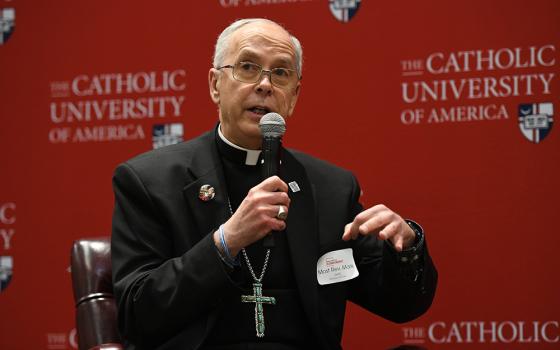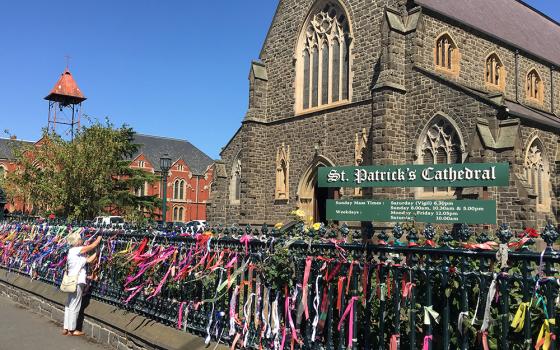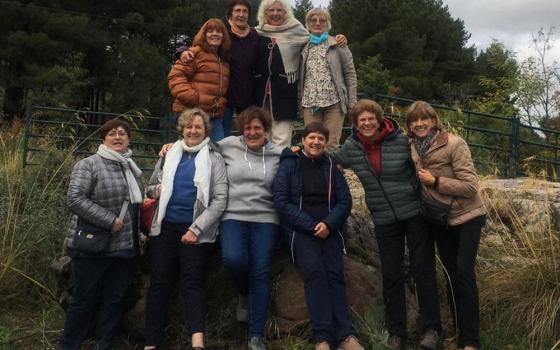
VIEWPOINT
Warning: The following ideas and images may be uncomfortable to imagine. (But they may still be good for us to read!)
References to women’s experience -- womb, pregnancy, labor, childbirth, nursing -- bring with them distinct images and memories from my own life, and my women friends and family feel the same. When, at two distinct gatherings of people wrestling with religious and spiritual issues, I heard others talking about these experiences in reference to religious experiences of God, it made the experience all the more amazing and extraordinary.
I grew up during a time when feminine experiences such as young girls’ menstrual cycles were hidden, even considered shameful. Menstruation was never talked about in public and was barely spoken about in many homes. Pregnancy was regarded as very special, but was somehow still an awkward subject. And nursing a baby, discouraged by many in the medical profession, was almost considered abnormal.
Thankfully, many experiences of girls and women have changed; I know this from raising two daughters of my own. Women’s physical experiences and cycles are no longer considered unmentionable or tainted, or dismissed as insignificant. Yet people in church circles still often tiptoe around feminine imagery and insights.
I have always been able to identify with the woman who touched Jesus’ cloak, hoping to be cured. Considered unclean by her bleeding (she is often called the “woman with the hemorrhage”), she could have had difficulty with menstruation because of a physical disorder. At a time when coming into contact with blood was considered taboo and touching a woman was unthinkable, she showed remarkable courage in approaching Jesus. And because of her, we have a wonderful story about Jesus and some images to describe his openness to women and to all of the flesh-and-blood realities they live with.
How can we show the same courage of imagination?
Pray using inclusive imagery and language. I know the language limitations within eucharistic liturgy, but we pray in many more ways than Eucharist. We pray before meetings and parish gatherings, with people who are facing crisis, at sacramental moments. We create prayers of praise and intercession; we write prayers for parish projects like capital campaigns. How do we address God? What titles do we use? What adjectives open our imaginations to explore God’s mystery? What hymns or psalms shape our images? If we cling to set images for God to the exclusion of other ideas, we risk making idols of those images. Human idols that try to limit or lock in God’s power need to be shattered.
Examine the images of God used at your church or hanging in your hallways and gathering places. Look at the images closely and objectively. Do they reflect the immensity of the mystery of God? Do they offer images for the various persons of the Trinity? Is God always depicted as male? What religious cards do you send? What images do you give to those celebrating the sacraments? These are teachable moments. It might surprise us to find that a card sent to someone facing difficulty might offer a comforting and long-lasting touch of God and might even be an image of God that already resonates for them.
If you preach, use feminine images. When half the population is forbidden to approach the ambo to preach within liturgy, but more than half the listeners are women, preachers must find ways to tell women’s stories, use feminine expressions and apply images that connect with real life. Today, many men and fathers have been in delivery rooms during labor and childbirth. Parents tell their children stories about the day they were born. People connect with these images and stories. It may be awkward at first, but nothing worth doing is easy to begin. Listen to women’s stories. Seek new insights by asking questions. Pray using different images for God that invite fresh insights into personal prayer and meditation.
When I was pregnant with my daughters, I was acutely aware of everything I ate, drank or breathed, knowing the effect it would have on my children’s growing bodies. Everything in my bloodstream became a part of them. Everything I ate put flesh on their bones and brought them closer to birth. I remember that while pregnant I reflected on Mary’s birthing of Jesus with this image. As a woman, she enfleshed the body of Jesus with her body. She turned her body and blood into God’s body. It is as sacred and stunning a eucharistic image as I have ever imagined. Yet I have not once heard the image spoken or prayed aloud even in the many feasts to Mary we celebrate as a church. While I am sure there are prayer leaders and preachers somewhere who have used this image in prayer, its power could be universal.
Our exploration of the power of God in our own lives, our journey into mystery and our growing understanding of God’s majesty depend on our willingness to take risks and free ourselves from the limits we place on God and on our own ability to invoke God with rich and daring imagery.
[This reflection will appear also in the November issue of Celebration, the worship resource of the National Catholic Reporter. Denise Simeone is a writer and consultant skilled at group facilitation, long-range planning and mission development.]



